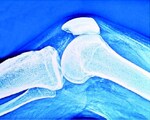The newly released guidelines expand routine screening to include all women 65 and older as well as younger women at high risk of bone fractures.

Osteoporosis screening is a test that patients should be asking about and clinicians should be providing. The most commonly used tests to screen for bone health are dual-energy x-ray absorptiometry (DXA) of the hip and lumbar spine and quantitative ultrasound of the heel. People over the age of 50 years are at an increased for osteoporosis. In addition, female sex, white race/ethnicity, smoking, alcohol intake, low body mass, and parental history of fractures are other risk factors for osteoporosis.
The newly released guidelines expand routine screening to include all women 65 and older as well as younger women at high risk of bone fractures. Also, it extends it down to any postmenopausal-age woman whose risk is the same as a 65-year-old. One example might be a postmenopausal woman not yet 65 years who weighs under 125 pounds, smokes, drinks and has parents with a history of bone fractures. All of those factors - thin frame, smoking, excess alcohol and family history - boost the risk of osteoporosis.
The guidelines suggest that doctors and policymakers look at the evidence underlying the task force recommendations, but also tailor their decisions to the specific patient or situation. The task force also noted that therapies to prevent bone fractures from osteoporosis included adequate calcium intake, vitamin D intake, weight-bearing exercise and several approved drug treatments.
According to the new report by the panel, over half of all postmenopausal women will develop a fracture related to osteoporosis during their lifetime, including 15 percent who will suffer a hip fracture. Hip fractures, in particular, are linked with chronic pain, disability, loss of independence and an increased risk of death. And these risks are not confined to women. Fewer men than women develop osteoporosis, but more than one-third of men who sustain a hip fracture die within a year.
The new recommendations are now closer to those issued by other groups, including the National Osteoporosis Foundation (NOF). The NOF now recommends bone mineral density testing for women 65 years and older, as well as some younger postmenopausal women, based on their risk factors. Unlike the task force, however, NOF also recommends testing for all men 70 and older, and for men aged 50 to 69 with risk factors.
DoctorNDTV is the one stop site for all your health needs providing the most credible health information, health news and tips with expert advice on healthy living, diet plans, informative videos etc. You can get the most relevant and accurate info you need about health problems like diabetes, cancer, pregnancy, HIV and AIDS, weight loss and many other lifestyle diseases. We have a panel of over 350 experts who help us develop content by giving their valuable inputs and bringing to us the latest in the world of healthcare.











